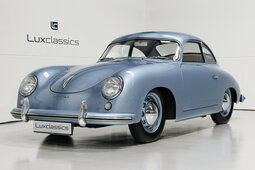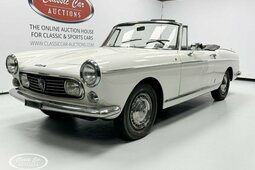After World War II, the United States saw an influx of European sports cars, with models such as the Jaguar XK120 and Nash-Healey gaining significant popularity. Yet, many of these imports failed to align with the American need for vehicles suited to lengthy, straight drives, offering ample comfort.
The clear market demand for an authentic American sports car prompted General Motors to take action swiftly. In 1953, they unveiled the Chevrolet Corvette, marking the launch of the first American-made sports car—a legend synonymous with the essence of American culture, akin to "Hot Dogs, Baseball, Mom, and Apple Pie." Notably, it remains the longest-produced sports car in the US to this date.
The Corvette was initially presented as a concept vehicle (EX-122) during the 1953 General Motors Motorama autoshow. Garnering an overwhelmingly positive reaction, GM initiated its production within just six months. Named after a swift, agile warship, the Corvette continued the legacy of European roadsters.
The initial vision for the Corvette was to match the length of a Jaguar while introducing a wider, flatter silhouette complemented by a panoramic windshield. A groundbreaking feature of the Corvette was its pioneering use of glass fiber in its construction, marking the first time this lightweight composite material was used in a production vehicle, offering substantial weight reduction compared to its competitors.
Distinctive design elements of the Corvette included its iconic chrome-trimmed grille with a "teeth" design and its signature bullet-shaped taillights. Although the original Corvette emblem featured an American flag, this detail was later removed due to regulations against using the flag in commercial products. Harley Earl, General Motors' lead designer who played a pivotal role in advocating for the creation of a two-seat sports car, admitted that the grille's open-tooth design was inspired by Ferrari models of that era.
Despite its sporty appearance, the Corvette's initial six-cylinder 3.9-liter 150 hp engine did not live up to American performance expectations, leading to disappointing sales of just 300 hand-assembled units in its debut year. These models, all finished in white with red interiors, did not meet the power desires of potential buyers, putting the Corvette, priced at $3,490 in 1953, at risk of discontinuation. Fortunately, the introduction of more powerful engines and design modifications in 1956 revitalized its sales and cemented its legacy.
Introducing a small-block V8 engine to replace the Corvette's initial straight-six was a game-changer, propelling the car into the spotlight as one of America's premier performance vehicles. Starting in 1955 with a 4.3-liter engine producing 195 hp, the Corvette saw continual improvements. By 1962, the culmination of the Mk1 era, it boasted a 5.4-liter V8 engine with an impressive 360 hp. In an era where speed and power were paramount, these enhancements significantly boosted the Corvette's sales and popularity, heralding its status as the iconic sports car it is recognized as today.
Between 1953 and 1962, GM produced a total of 68,915 units of the first-generation Chevrolet Corvette, known as the C1. Nowadays, their prices start at about $50,000, with many surpassing $100,000. The 1953 models, in particular, hold immense value for collectors; for instance, one was auctioned for $660,000 at the 2014 Scottsdale event.
---
Embark on a journey to find your ideal vehicle by browsing through our Car Categories. Or, delve into our Classic Passion Shop for an exciting array of products from our partners, perfect for enthusiasts looking to enhance their collection!











